Kosciuszko trail — places tied to the hero’s legacy.
Tourist routes of the Zhabinka District - “KOSTIUSHKA'S ROUTE”
Zhabinka – Maliya Syakhnovichi – Velykiya Syakhnovichi – Kryvlyany – Vezhki – Matsievichy – Zdzitava – Zhabinka – Chyzhevshchyna.
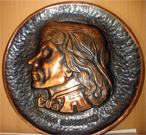
Not every corner of the earth is fortunate enough to recall a figure equal in talent to Tadeusz Kościuszko. This celebrated man, who during his lifetime was already called the “Hero of Two Continents” and the “Purest Son of Liberty,” is honored as a national hero by the peoples of Belarus, Poland and the United States of America. The name of T. Kościuszko rallied people under the banners of freedom. The support and friendship of the general were sought by the most famous figures of the borderlands in the 18th and 19th centuries. Interest in him has not waned even now.
The land of Zhabinka prides itself on its connection with such a great man. Many places in our region are closely intertwined with his life and activities, which allows any traveler to follow the “Kościuszko route.”
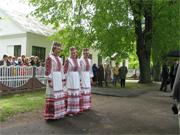
Tourists first travel about 6 km north of Zhabinka — to the village of Maliya Syakhnovichi. Once here stood the ancestral estate of the noble Kościuszko-Syakhnovitsky family, bearing the “Roch-III” coat of arms, known in the Brest region. Some historians and local lore experts consider Syakhnovichi to be the birthplace of T. Kościuszko. He spent about ten years of his turbulent life at this manor.
Now, from the former manor where twelve generations of the family lived, only the remains of the old Kościuszko park remain, partly planted by the general himself. The village also has a memorial room dedicated to T. Kościuszko and a bust-monument to the hero, created 70 years ago by A. Vidatsky.
North of Maliya Syakhnovichi local residents can show you the Zhulkavshchyzna tract, the former hereditary nest of T. Kościuszko’s elder sister, Katsiaryna Zhulkowskaya. It is located next to the village cemetery, where there is a chapel-tomb of the last owners of the Velykiya Syakhnovichi manor.
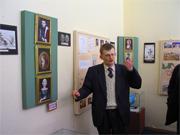
Since the 16th century this settlement has been the center of the landed heritage of the elder branch of the Kościuszko-Syakhnovitsky family. One of them — Pavel Kościuszko — at his own expense in 1727 founded the Church of St. Nicholas, an excellent monument of wooden architecture of Belarusian Polesie. The Orthodox church remains active to this day. Ignacy Zhalyazovsky, who served as the bishop of Brest from 1848 to 1870, was once baptized there.
From Velykiya Syakhnovichi the road moves north — to where the estates of the wealthy and influential Czartoryski princes once stood. In the times of the Kościuszko-Syakhnovitskys there was a castle here, near the village of Kryvlyany (unfortunately it has not survived to our times). Many historians believe that the young Tadeusz Kościuszko owed much of his admission to the Warsaw Cadet Corps to Adam Czartoryski.
In the village of Vezhki — one of the oldest in the Zhabinka district — stands the stone Church of the Ascension, built on the site of an ancient destroyed temple that originated in the times of the Kościuszkos and the Czartoryskis.
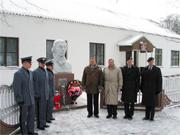
The route then passes through Maliya and Velykiya Yakavchytsy toward Matsievichy. This village is adorned by the Church of St. John the Forerunner, erected in the first quarter of the 18th century through the efforts of the Kościuszko-Syakhnovitskys.
Now, on the way to Zhabinka, having viewed the sacred shrines of the region built by the general’s ancestors, you may also visit Zdzitava, where on the very bank of the Mukhavets River the Church of St. Michael has stood for more than half a millennium. Generations of the famous family attended services here; it was here that Colonel Ludwik Kościuszko-Syakhnovitsky (1700–1758), father of the future leader of the national uprising of 1794, was buried.
Now is the time to find on our land vivid confirmations of that great and tragic time. This leads travelers from Zhabinka to head south in the district along the Brest–Minsk highway in search of the village of Chyzhevshchyna, which preserves a deep memory of the Kościuszko Uprising.
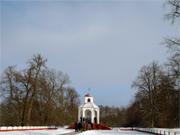
These places in 1794 witnessed the Battle of Krupchitsy. For several hours the insurgent forces resisted the Russian regiments of the famous General A. V. Suvorov on the Great Krupchitsy Field.
To honor this event, the Church of St. Vladimir was founded in Chyzhevshchyna in 1891–1894. In Soviet times (1952) a small obelisk — a monument to Suvorov’s warriors — was also erected “to glorify Russian arms,” and on September 23, 2004, in the center of the village the Krupchitsy memorial chapel was opened and consecrated in honor of the 210th anniversary of the historical event. Laying flowers there can complete the journey through the places associated with the name of T. Kościuszko in the Zhabinka area.
However, for those more interested in the details devoted to the Battle of Krupchitsy — a decisive moment in our history — a new route is offered, which is better covered by bicycle or on foot.